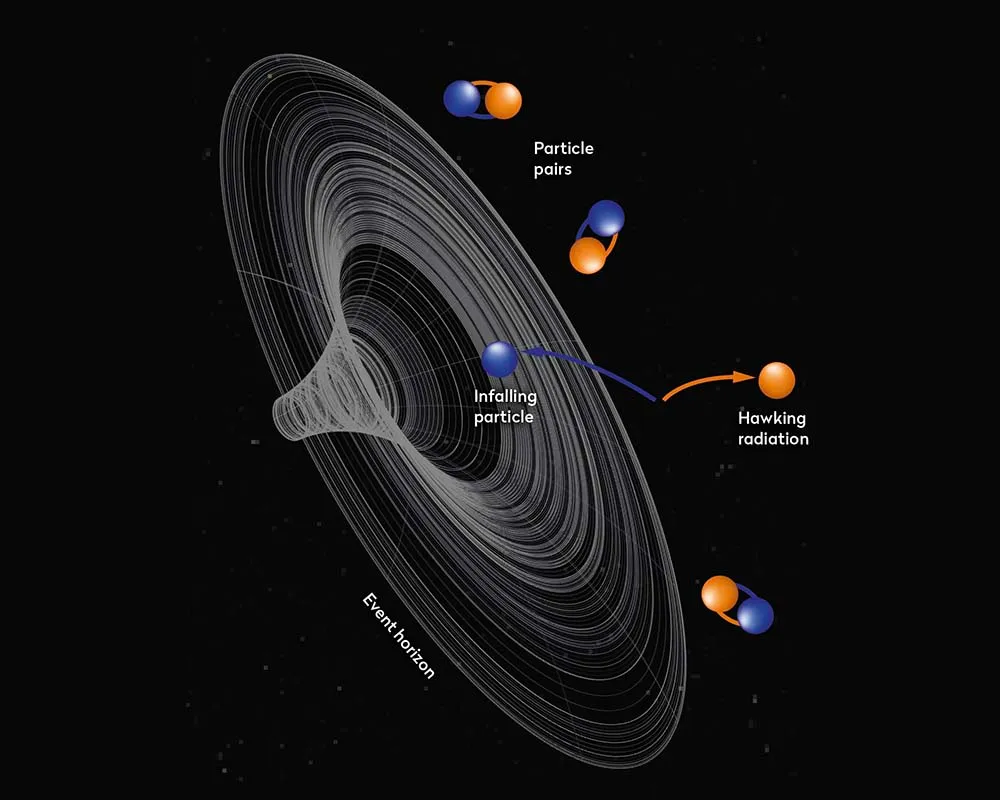One of Professor Stephen Hawking’s most famous ideas is known as Hawking radiation. By leaking particles back into space, a black hole can very slowly evaporate away.
But what exactly is Hawking radiation, and how is it generated?
Physicists know that on the smallest scales of the Universe pairs of particles pop into existence, suddenly appearing out of the vacuum only to rapidly recombine and disappear again.
They are called ‘virtual particles’ and Stephen Hawking wondered what would happen if this process unfolded right on the event horizon of a black hole.
More about black holes:

If one particle crosses the event horizon then it is forever separated from its companion and can never recombine with it.
The particles that are left outside the event horizon are called ‘Hawking radiation’.
However, the particles had to ‘borrow’ energy from empty space to appear in the first place.
Normally this debt is repaid when they recombine, but as that can’t happen in this case they effectively default on the loan.
The repayment has to come from somewhere: the black hole.
So over time a black hole slowly loses mass due to the constant need to cover these energy debts to empty space. It means that a black hole slowly evaporates over time.
Although ‘slowly’ is a bit of an understatement. The number of years it would take a black hole with the same mass as the Sun to evaporate is one followed by 64 zeros – many times the current age of the Universe.
